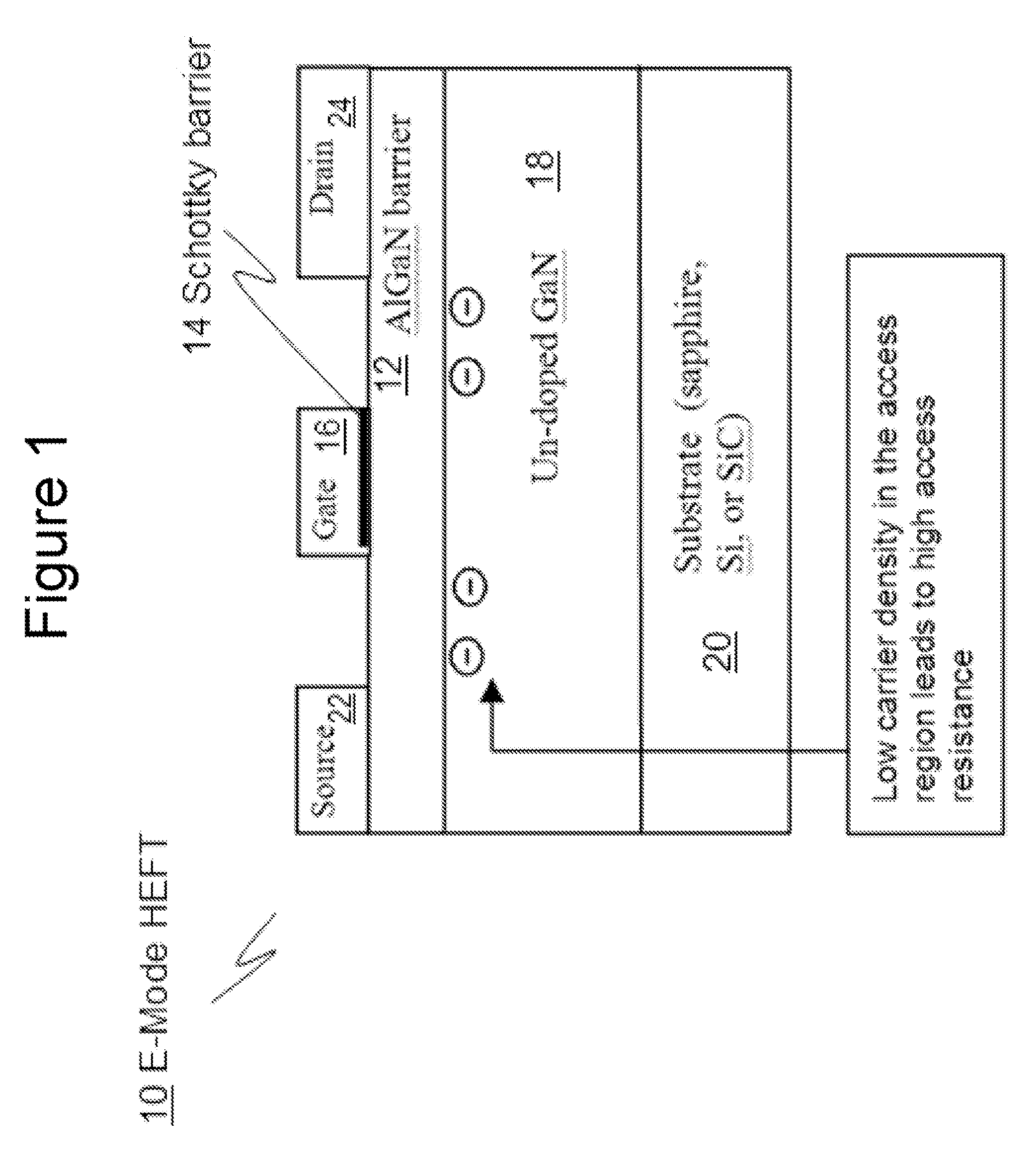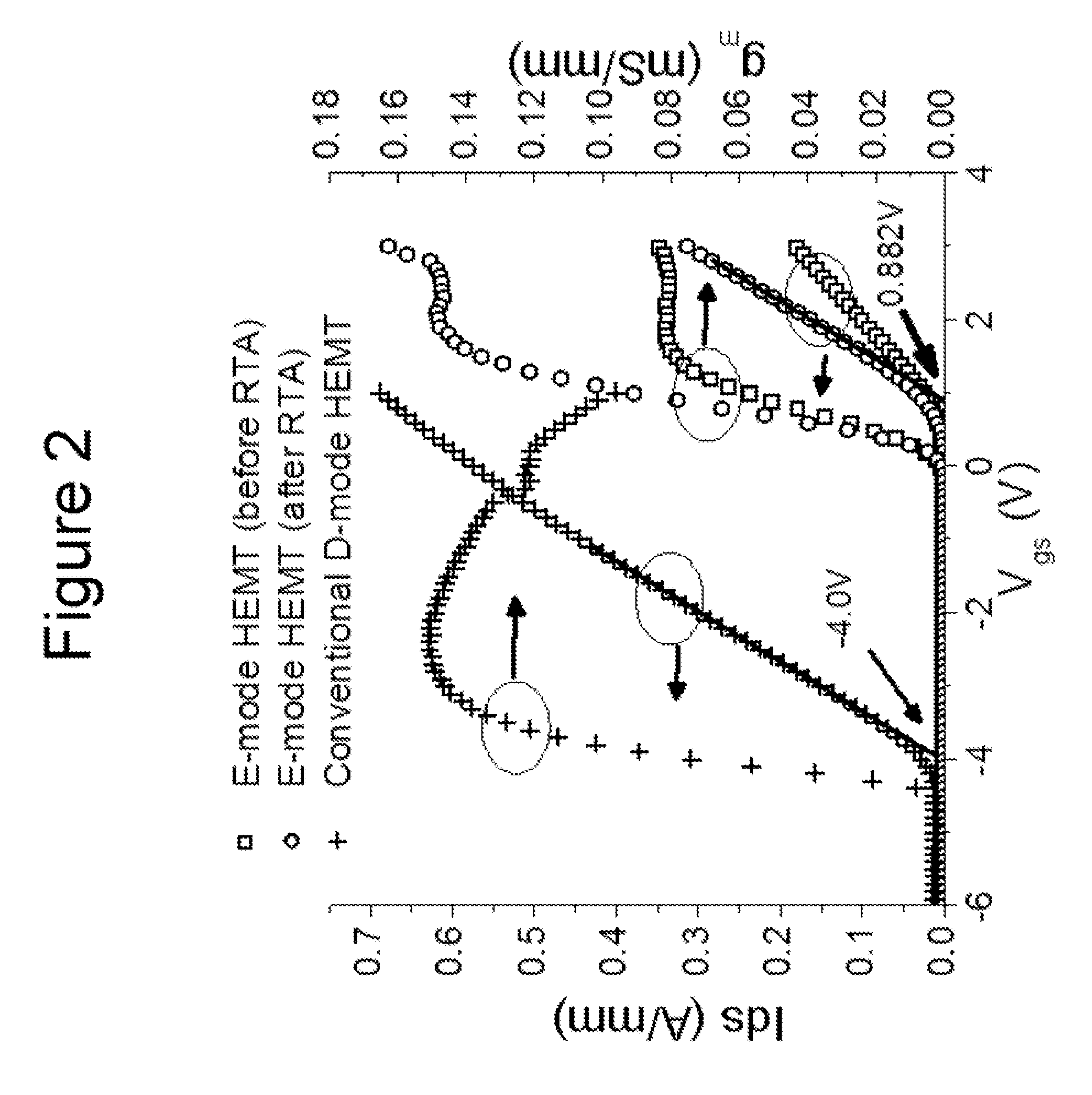Enhancement-Mode III-N Devices, Circuits, and Methods
a technology of enhancement-mode and heterostructure, which is applied in the direction of semiconductor devices, basic electric elements, electrical equipment, etc., can solve the problems of poor performance characteristics of e-mode hfet's fabricated in this manner, large on-resistance, and low transconductance, and achieve high breakdown field, large thermal conductivity, and wide band gap
- Summary
- Abstract
- Description
- Claims
- Application Information
AI Technical Summary
Benefits of technology
Problems solved by technology
Method used
Image
Examples
example 1
[0059] An AlGaN / GaN HEMT structure was grown on a (0001) sapphire substrate in an Aixtron AIX 2000 HT metal-organic chemical vapor deposition (MOCVD) system. The HEMT structure consists of a low-temperature GaN nucleation layer, a 2.5-m-thick unintentionally doped GaN buffer layer and an AlGaN barrier layer with nominal 30% Al composition. The barrier layer consists of a 3-nm undoped spacer, a 15-nm carrier supplier layer doped at 2.5×1018 cm−3, and a 2-nm undoped cap layer. Room temperature Hall measurements of the structure yield an electron sheet density of 1.3×1013 cm−2 and an electron mobility of 1000 cm2 / Vs. The device mesa was formed using Cl2 / He plasma dry etching in an STS ICP-RIE system followed by the source / drain ohmic contact formation with Ti / Al / Ni / Au annealed ate 850° C. for 45 seconds. The ohmic contact resistance was typically measured to be 0.8 ohn-nm.
[0060] After gate windows with 1 nm length were opened by contact photolithography, the sample was treated by CF4 ...
PUM
 Login to View More
Login to View More Abstract
Description
Claims
Application Information
 Login to View More
Login to View More - R&D
- Intellectual Property
- Life Sciences
- Materials
- Tech Scout
- Unparalleled Data Quality
- Higher Quality Content
- 60% Fewer Hallucinations
Browse by: Latest US Patents, China's latest patents, Technical Efficacy Thesaurus, Application Domain, Technology Topic, Popular Technical Reports.
© 2025 PatSnap. All rights reserved.Legal|Privacy policy|Modern Slavery Act Transparency Statement|Sitemap|About US| Contact US: help@patsnap.com



